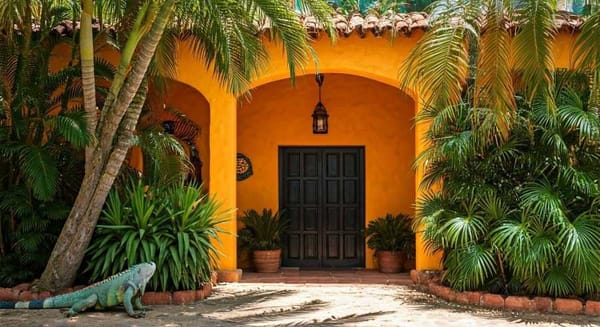Ritual enemas in Mesoamerica
The use of enemas to administer medicines is well documented among the 16th century Aztecs. Book X of the Florentine Codex mentions a wide variety of medicines that were applied.

Throughout Mesoamerica, there are indications that confirm the use of enemas, i.e., instruments to introduce liquids into the lower digestive tract. While most of the pre-Hispanic enemas were made with perishable materials such as pumpkins or bules, guts, and even rubber, some were ceramic and persist as archaeological evidence.
There are abundant representations of the use of enemas in Mayan art of the Classic period, especially in scenes of late Classic vessels, but along with archaeological evidence, we also have colonial compilations and current traditions of the indigenous peoples of Mesoamerica. Information from pre-Hispanic scenes and later testimonies clearly show that enemas had various uses in Mesoamerica: to heal, to purify and to introduce hallucinogenic and intoxicating substances into the body.
Types of enemas
Perhaps the oldest enema we know in Mesoamerica is a curious ceramic object from Xochipala, Guerrero. Many researchers consider that the Xochipala period dates from the Early Preclassic, from 1200 to 900 B.C., approximately. This vessel, almost 15 centimeters long, represents a man with a large hole in the center of his bulging abdomen. At the top of his head protrudes a finely burnished, tube-shaped element through which the artifact is inserted into the body. Although this object does not correspond at all to the image of modern Western rubber lavatives, it is perfectly consistent with pre-Hispanic forms.
In the New World, one of the most common ways of applying a lavative was with the help of a helper who was blowing forcefully through a tube, which was almost always made of bone or reed. However, this simple enema assumes that the liquid must first pass through the mouth of the person applying it. The Xochipala specimen is more complex: fluid comes out of a reservoir, not from the mouth.
We know other simpler ceramic enemas, almost always with a large hole on the side and a bulge to insert it. Ceramic copies of the forms of the bule, Lagenaria siceraria, often appear. As will be seen, there are a large number of representations of enemas made of cut boules in Late Classic Mayan art. The large hole that appears next to the bules and ceramic pieces is not only used to fill the tank, but to introduce the liquid by blowing.
The Franciscan Manuel Mingo tells in detail how these enemas were used among the Chiriguano of eastern Bolivia in the late eighteenth century, the westernmost branch of the Tupiguarani:
...they had been administered a lavative or clister. This instrument... is curious, it consists of a small hollow pumpkin or jícara with a circular hole at the top and a small hole at the bottom. The lower part is connected or placed in a hollow injection tube or a jonquil, which corresponds to the cannula of the lavative. Above... the "broth" of urine is scented with a little salt. Then, the person acting as assistant or nurse blows forcefully into the opening or hollow of the pumpkin, and the force of the blow passes the liquid into the patient's intestine.
This type of solid enema had a wide diffusion in the New World. It is found not only in the lowlands of South America and Mesoamerica but also in the southwestern United States. These enemas are almost identical in Mesoamerica from about 700 A.D. onwards.
Medicinal Enemas
The use of enemas to administer medications is well documented among the Aztecs of the 16th century. Book X of the Florentine Codex mentions a great variety of medicines that were applied by anal route by means of enemas, to cure diseases such as bloody urine, hemorrhoids, diarrhea, retention of urine, and persistent cough or with phlegm and blood. With the description of the hemorrhoid cure appears an illustration of a woman administering an enema. However, in this scene, the enema appears to have a cannula and could be of European origin. According to Antonio de Herrera, the medicinal purges were administered through the anal route, by an assistant who blew through a hollow heron bone.
We know of the medicinal use of enemas in other parts of Mesoamerica, in addition to that practiced by the Aztecs. Among the Yucatan Mayans, the word halab means "enema" and the Yucatec colonial dictionary of San Francisco defines halab as "medicinal purge". The meaning is similar to that of the Yucatec colonial dictionary of Vienna, where the phrase halab tz'ak means "medicinal enema". Among the contemporary Maya of the highlands of Guatemala, enemas are used to cure dysentery and constipation.
Although we lack documents that speak directly of it, it is likely that the enemas were also used in the ancient ceremonial purifications of Mesoamerica for their purging qualities. Healing and purifying are closely related categories, and purification rituals were often part of the healing processes. In some contexts the enemas must have been part of a ritual purification complex that included fasting, cleansing, and bathing, often in temazcal; Book XI of the Florentine Codex mentions that this was used after the application of lavatives.
Intoxicating Enemas
In addition to their use for curing and purification ceremonies, enemas were used to introduce alcoholic and perhaps hallucinogenic beverages into the body, as these are absorbed more quickly by the lower digestive tract. The use of hallucinogenic enemas is well documented among the native peoples of the South American lowlands. Erland Nordenskiöld (1930) describes the use of parica enemas in the upper Amazon:
It is said that some Indians are so addicted to this vice that they always carry with them a cannula in order to be able to depart, when they feel like it, towards the region of happy dreams. The Indians use parica above all in their festivities, and it is said that on such occasions a good host distributes cannulas among his guests.
However, there are few direct references to anal hallucinogen administration in Mesoamerica. Alcohol, on the other hand, seems to have been the preferred substance for that purpose. Peter Furst and Michael Coe (1971) first documented, 20 years ago, the use of intoxicating enemas among the Mayans of the Classic period. They studied a polychrome vessel, perhaps from the 7th century A.D., in which individuals appear conversing while using enemas.
In the middle of the vessel are a curtain and a roof, as if the lower scene took place in a palace or a house. The scenes are definitely domestic, as the men are accompanied by their wives and even by a child, and there are also vessels of shapes similar to the vessel itself. The mouths of the vessels have peaks where the foam of fermented alcoholic beverages can be seen. In Late Classic representations, these vessels are sometimes marked with chi phonetic glyph.
In some Mayan languages, chi means "pulque" and other alcoholic beverages, while ah chi means "drunk". Although the enemas contained alcohol, it seems likely that hallucinogens or other substances were added to reinforce them. The English Dominican Tomás Gage, who traveled through Guatemala in the first half of the 17th century, tells us that certain elements were added to reinforce alcoholic beverages, even toads. The enemas that appear in the scenes of the polychrome vessels are tube-shaped, with a large hole on one side. This is the typical form of Petén-style enemas during the Late Classic, copied from the bules. Nowadays we find almost identical bules that are used as recipients of tobacco between the tzeltales of the Altos de Chiapas.
Source: Arqueologia Mexicana, Taube, Karl A., "Enemas rituales en Mesoamérica", Mexican Archaeology, no. 34, pp. 38-45..
Karl A. Taube. Doctor in anthropology from Yale University since 1988. Professor, Department of Anthropology, University of Riverside, California. Specialist in writing and religious systems of ancient Mesoamerica. Studies the interpretation and reconstruction of the sculpted facades of Structure 10L-16 of Copán, Honduras.




